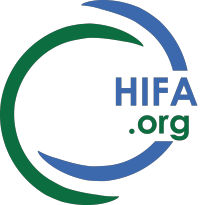From Chat: Here’s a list of AI-powered dermatology image interpretation tools that are currently making an impact, especially in low-resource settings:
Top AI Tools for Dermatology Image Analysis
1. SkinVision
• Function: Uses deep learning to analyze skin lesions and moles for signs of melanoma and other skin cancers.
• Key Features:
• Instant risk assessment (low, medium, high)
• CE-marked, clinically validated in Europe
• Works via a smartphone app
• Best for: Early cancer screening and triage
• Platform: iOS, Android
• Note: Paid service; can work offline after downloading.
2. DermAI (by First Derm)
• Function: AI-based image analysis of over 40 skin conditions using smartphone photos.
• Key Features:
• API available for integration in remote clinics
• Can be used without an internet connection
• Doesn’t store identifiable data
• Best for: General dermatology support in field clinics
• Platform: API, mobile integration
• Website: firstderm.com<https://www.firstderm.com/ai-dermatology/>
3. Google’s DermAssist (AI Test Tool)
• Function: Uses AI trained on over 65,000 skin conditions; designed for educational and informational purposes.
• Key Features:
• User-friendly
• Multilingual support
• Currently only available in some regions and still under clinical validation
• Best for: Diagnostic support and patient education
• Website: Google Health DermAssist<https://health.google/dermassist>
4. SkinIO
• Function: Designed for clinical use; uses AI to track moles and detect skin changes over time.
• Key Features:
• Works with dermoscopy images
• HIPAA compliant
• Designed to be used by non-dermatologist clinicians
• Best for: Clinics with regular follow-up needs
• Website: skinio.com<https://skinio.com/>
5. Aysa (by VisualDx)
• Function: AI-based symptom checker and skin image analyzer for over 200 skin conditions.
• Key Features:
• Based on VisualDx’s massive medical image library
• Offers likely diagnoses and home care suggestions
• Best for: First-line triage in rural clinics
• Platform: iOS, Android
• Website: Aysa App<https://www.aysa.care/>
Offline & Open Source Options
6. OpenDermAI
• Function: Community-driven open-source platform for dermatology AI.
• Key Features:
• Can be adapted for local skin types
• Potential for offline deployments in rural areas
• Best for: Academic, NGO, or public health projects
• GitHub: [Search “OpenDermAI” or similar repositories]
7. Teledermatology Platforms
• Tools like MDLIVE, DermLink, and TriageDerm allow general practitioners to send photos to remote dermatologists, and may include AI triage.
Important Considerations
• Data privacy: Ensure tools comply with local and international data protection laws (e.g., HIPAA, GDPR).
• Skin type diversity: Check if the AI has been trained on diverse skin tones (important for accuracy).
• Connectivity: Prioritize tools with offline capabilities or lightweight mobile apps for use in areas with limited internet.
HIFA profile: David Cawthorpe is Adjunct Assistant Professor at the University of Calgary, Canada. His professional interests include: Human Development, Developmental Psychopathology, and Delivery of low bandwidth medical education curriculum. cawthord AT ucalgary.ca

